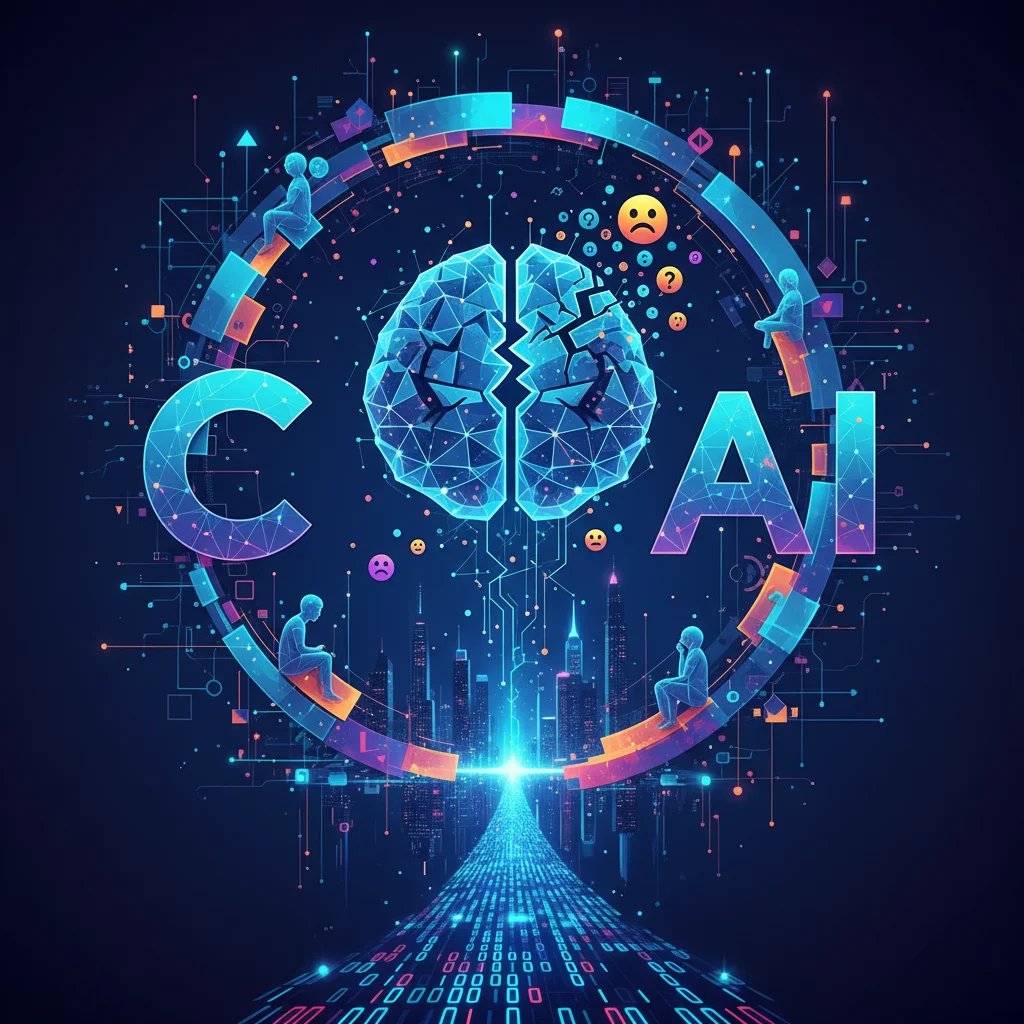
The Unseen Crisis: What ChatGPT’s Data Reveals About Our Mental Health and the Future of AI
We interact with artificial intelligence every day. It recommends our next movie, organizes our photos, and powers the search engines that answer our most trivial and profound questions. For millions, AI—specifically large language models (LLMs) like ChatGPT—has become a constant companion, a brainstorming partner, and a source of information. But what happens when our conversations with these machines turn dark? What is the role of AI when it encounters the raw, unfiltered reality of human despair?
A recent report has pulled back the curtain on this very issue, revealing a startling statistic. OpenAI, the creator of ChatGPT, shared data indicating that a significant number of its users exhibit signs of severe mental distress, including psychosis or suicidal thoughts. While the percentage seems small, the sheer scale of platforms like ChatGPT transforms that fraction into a staggering human figure. This isn’t just a technical curiosity; it’s a profound ethical crossroads for the entire tech industry, impacting everything from software development and SaaS platform responsibility to the very definition of digital “duty of care.”
The Numbers Behind the Conversations
At the heart of this revelation is a single, potent statistic. OpenAI’s safety systems are designed to detect and respond to conversations that veer into territory of self-harm. According to a report from the BBC, these systems are triggered in approximately 0.05% of the hundreds of millions of conversations happening on the platform each week.
On its own, 0.05% sounds negligible. But context is everything. ChatGPT boasts over 100 million weekly active users. When you apply this percentage to such a massive user base, the number is no longer abstract. It could represent potentially hundreds of thousands of individuals expressing severe mental health distress to an AI every single week. This data forces us to confront a new reality: AI chatbots have inadvertently become silent witnesses to a global mental health crisis.
To better understand the scale and OpenAI’s tiered response system, let’s break down the process:
| Risk Category | Description & Trigger Examples | Automated AI Response |
|---|---|---|
| Low-Risk | User expresses general sadness, loneliness, or mild depressive feelings. Keywords might include “sad,” “lonely,” “feeling down.” | The conversation continues normally, possibly with empathetic-sounding language generated by the model. |
| Medium-Risk | User mentions self-harm in a non-immediate or abstract way. The language is concerning but lacks specific intent or planning. | The model may be programmed to gently steer the conversation to safer topics or offer general wellness advice. |
| High-Risk (“Red-Flag”) | User expresses clear and immediate suicidal intent, details a plan, or exhibits signs of psychosis. This triggers the highest alert level. | The system automatically interrupts the conversation to provide contact information for a suicide prevention helpline, such as the 988 Suicide & Crisis Lifeline (source). |
This automated, triaged approach is a feat of machine learning and engineering. It’s a scalable solution to an impossibly large problem. But it also raises fundamental questions about the adequacy and ethics of using automation as the primary first responder in a moment of crisis.
The Day the Internet Stood Still: Deconstructing the AWS Outage and Our Digital Future
Behind the Curtain: How AI Detects Distress
Detecting nuanced human emotions like despair is one of the most complex challenges in artificial intelligence. It’s not as simple as flagging a few keywords. Modern LLMs employ sophisticated safety classifiers—specialized models trained to recognize and categorize different types of content.
Here’s a simplified look at the process:
- Input Analysis: Every prompt a user enters is analyzed not just for its literal meaning but also for its context, sentiment, and potential intent.
- Classifier Models: The input is run through a series of safety models. One model might look for hate speech, another for explicit content, and a crucial one looks for signals of self-harm. These classifiers are trained on vast datasets that include examples of safe and harmful language, allowing them to learn the subtle patterns associated with distress.
- Risk Scoring: The classifier assigns a “risk score” to the input. A conversation about the history of psychology might get a score of 0.01, while a direct statement of intent to self-harm could score a 0.99.
- Automated Response: If the score crosses a pre-defined threshold (like the “High-Risk” category in our table), the system’s pre-programmed protocol is triggered. This entire process, from analysis to response, happens in milliseconds, a testament to the power of modern cloud computing and AI programming.
This technical framework is a cornerstone of responsible AI development. However, it’s imperfect. Classifiers can produce false positives (flagging harmless content) or, more dangerously, false negatives (missing a genuine cry for help). The ongoing challenge for AI researchers is to improve the accuracy and empathy of these systems without infringing on user privacy—a delicate balancing act with profound human consequences.
The Ethical Tightrope: Intervention vs. Privacy
OpenAI’s approach of providing a helpline number is widely considered the current best practice. It’s a direct, actionable intervention that respects user privacy by not collecting personal data or alerting authorities. As OpenAI’s safety chief, Lilian Weng, notes, the goal is to “provide helpful information without being preachy” (source). This strategy avoids the immense cybersecurity and ethical risks of a more hands-on approach.
However, this solution is not without its critics. Is a sterile, automated message providing a phone number truly enough? For someone in the throes of a crisis, this impersonal response could feel dismissive or unhelpful. This dilemma highlights the core tension in AI safety:
- The Argument for Automation: It’s the only feasible way to monitor billions of interactions at scale. It provides a consistent, non-judgmental, and immediate response 24/7, something human moderation could never achieve.
- The Argument for a Human Touch: A genuine human connection is often what’s most needed in a crisis. Critics argue that relying solely on AI abdicates a deeper moral responsibility and risks further alienating vulnerable individuals.
Furthermore, the very act of monitoring conversations for these keywords brings up privacy concerns. Users may not be aware that their intimate conversations are being algorithmically scanned for signs of distress. While companies like OpenAI anonymize data and focus on patterns rather than individuals, the potential for misuse or data breaches is a constant concern in the field of cybersecurity. Striking the right balance between proactive safety measures and a user’s right to privacy is perhaps the single greatest challenge facing AI companies today.
Disney's Churn Crisis: What a Celebrity Scandal Teaches Us About AI, SaaS, and the Future of Tech
Implications for the Broader Tech Ecosystem
This isn’t just an OpenAI problem; it’s an industry-wide challenge. As more startups and established companies integrate generative AI into their products—from customer service bots to educational tools—they inherit this ethical burden. The innovation driving the AI boom comes with a new set of responsibilities that many are unprepared for.
For developers and entrepreneurs, this means safety can no longer be an afterthought. Here are some actionable takeaways:
- Prioritize “Safety by Design”: When building an application on top of an LLM API, integrate safety protocols from day one. Use the safety features provided by platforms like OpenAI, and consider adding your own layers of content moderation and response mechanisms.
- Be Transparent with Users: Your terms of service and privacy policy should clearly state how user data is handled, especially in the context of safety monitoring. Users deserve to know how and when an automated system might intervene in their conversations.
- Establish Clear Escalation Paths: While your first line of defense will be automated, have a clear policy for what happens in edge cases. This doesn’t necessarily mean human intervention in every case, but rather a well-defined protocol for reviewing and improving the automated system’s performance.
- Stay Informed on Best Practices: The field of AI safety is evolving rapidly. Follow research from organizations like the Alignment Research Center and stay updated on the latest techniques for building safer and more responsible AI systems.
The rise of generative AI represents a paradigm shift. Unlike traditional software, which was a passive tool, AI is an active participant in a user’s life. This new relationship demands a higher standard of care and a deeper consideration of the human impact of our code.
The Day the Internet Stumbled: Decoding the Latest AWS Outage and What It Means for You
Conclusion: The Dawn of Empathetic Machines?
The data from ChatGPT is a mirror reflecting a difficult truth about our society. While it’s jarring to see the scale of mental distress, it’s also a powerful reminder of the need for accessible support. The AI industry finds itself at a pivotal moment. The technology that has been built—this powerful, scalable, conversational artificial intelligence—is now being tasked with navigating the most delicate aspects of the human experience.
The path forward is not to recoil from this challenge but to meet it with a renewed commitment to responsible innovation. It requires a multi-disciplinary approach, combining the expertise of engineers, psychologists, ethicists, and policymakers. We must refine the technology, making our safety systems more accurate and nuanced. We must clarify the ethical guidelines, ensuring that user well-being is the ultimate priority. And above all, we must never forget the human on the other side of the screen. The goal is not to replace human connection but to build systems that can safely and effectively support it, especially when it’s needed most.


